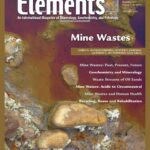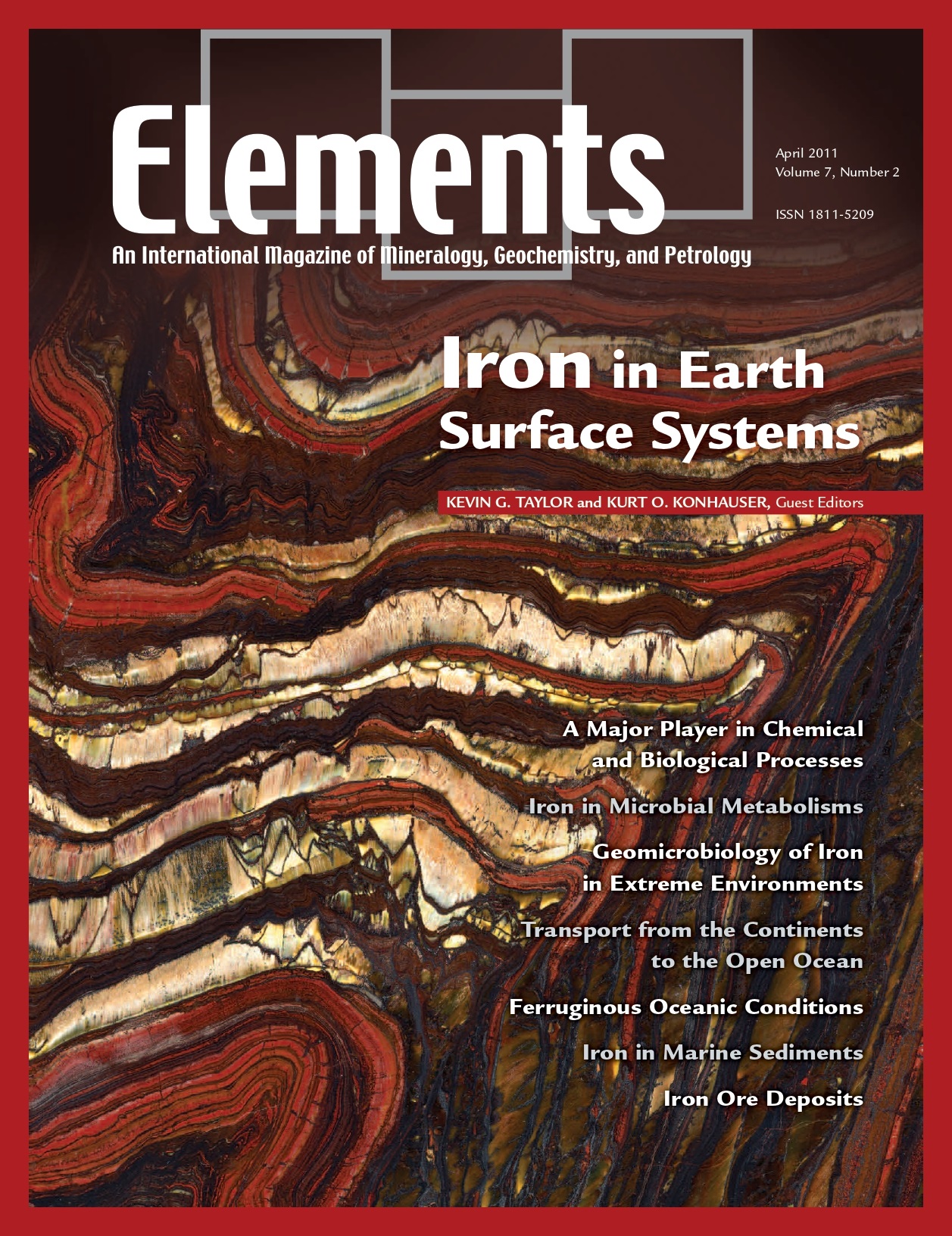
Sustainable Remediation Of Soils, December 2010, Vol. 6, No. 6
June 28, 2024
Mine Wastes, December 2011, Vol. 7, No. 6
June 28, 2024Iron In Earth Surface Systems, April 2011, Vol. 7, No. 2
$20.00
Iron is the fourth most abundant element at the Earth’s surface. As an essential nutrient and electron source/sink for the growth of microbial organisms, it is metabolically cycled between reduced and oxidized chemical forms.
Iron In Earth Surface Systems
April 2011, Vol. 7, No. 2
Iron is the fourth most abundant element at the Earth’s surface. As an essential nutrient and electron source/sink for the growth of microbial organisms, it is metabolically cycled between reduced and oxidized chemical forms. This flow of electrons is invariably tied to the reaction with other redox-sensitive elements, including oxygen, carbon, nitrogen, and sulfur. The end result of these interactions is that iron is intimately involved in the geochemistry, mineralogy, and petrology of modern aquatic systems and their associated sediments, particulates, and pore waters. In the geological past, vast iron sediments, the so-called banded iron formations, suggest that iron played an even greater role in marine geochemistry, and these deposits are now being used as proxies for understanding the chemical composition of the ancient oceans and atmosphere. This issue explores not only the modern expression of iron cycling but also its record in Earth’s history.
Why You’ll Love Elements Magazine:
- Expert Contributors: Articles written by renowned researchers in the field of geoscience.
- Engaging Content: Join a community of readers who are passionate about Elements.
- Exceptional Quality: Each issue is printed on high-quality paper with stunning visuals and detailed illustrations that bring complex scientific concepts to life.
Order your copy of the April 2011 issue of Elements magazine today and learn about iron in Earth surface systems.
Related products
-
Frontiers In Textural And Microgeochemical Analysis, August 2007, Vol. 3, No. 4
$20.00Recent advances have been made in high-resolution in situ methods to image mineral growth patterns, analyse compositional and isotopic zonation, and improve our ability to visualize, study, and model rock textures in three dimensions. These advances provide a significant step forward in the understanding of how rocks form and the history they can tell us.
-
On The Cutting Edge: Teaching Mineralogy, Petrology, And Geochemistry, April 2007, Vol. 3, No. 2
$20.00New advances in research on learning have important implications for teaching mineralogy, petrology, and geochemistry. Effective instructional practices are increasingly student centered, address diverse student learning styles, and employ a variety of active-learning strategies.
-
Phosphates And Global Sustainability, April 2008, Vol. 4, No. 2
$20.00Phosphorus is a unique element: it is essential to the existence of all living forms, and as such controls biological productivity in many terrestrial and marine environments; but when in excess, it leads to uncontrollable biological growth and water-quality problems. This has become a common environmental issue, resulting from our careless use of phosphorus in agriculture, yet phosphate ore deposits, from which fertilizers are produced, are a finite natural resource.




